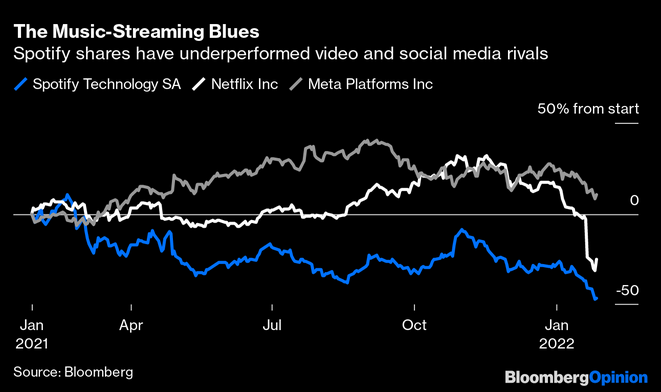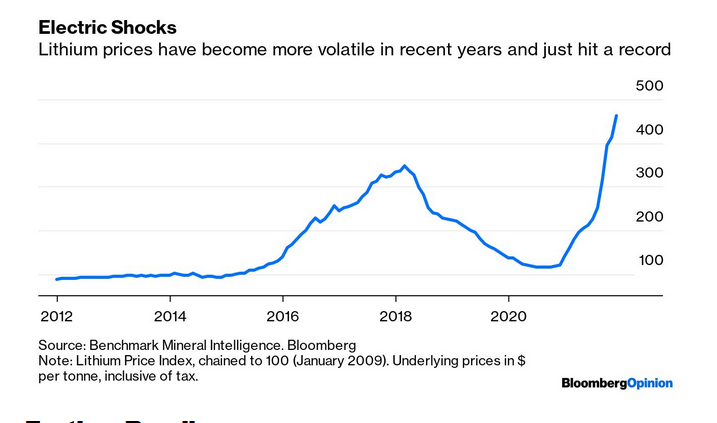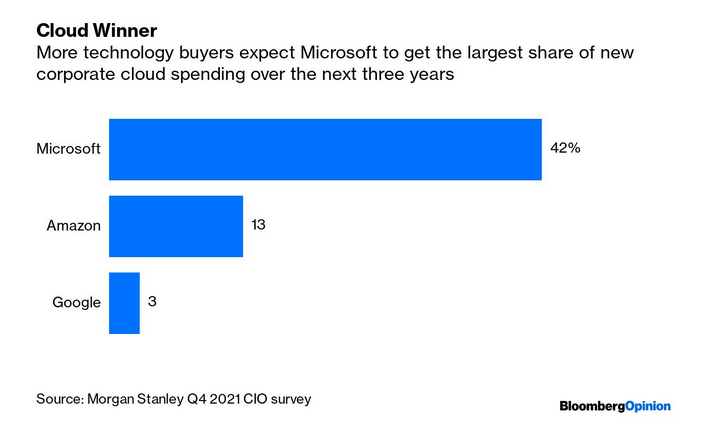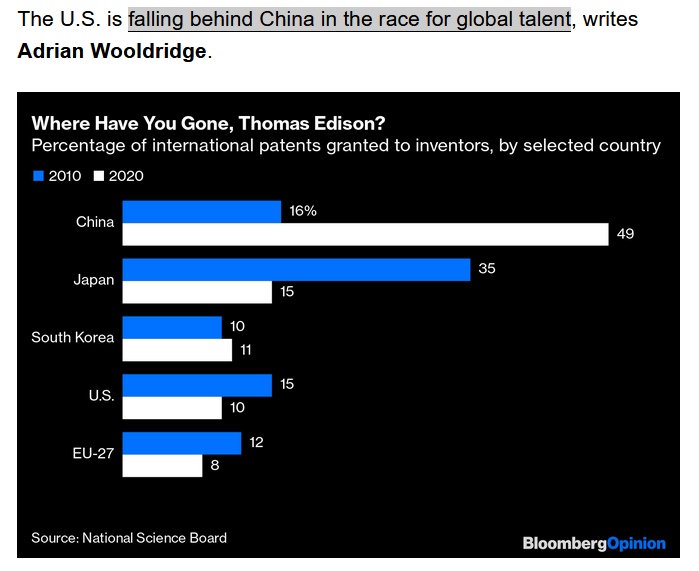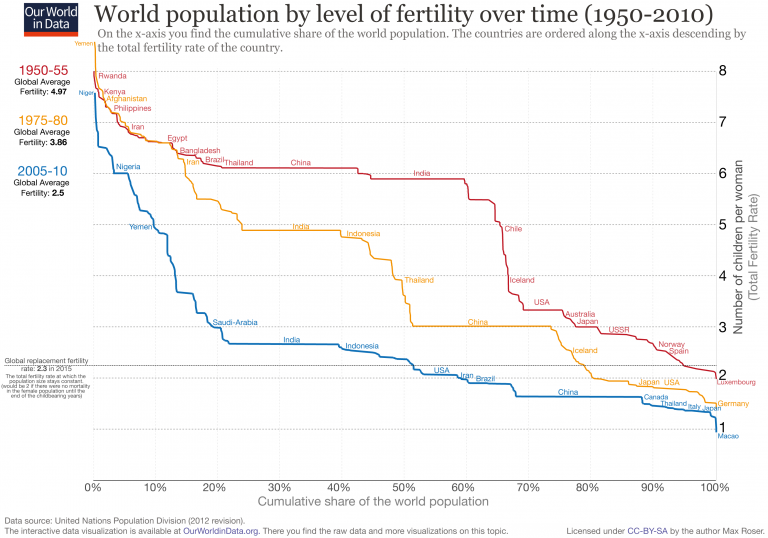
Châtenay-Malabry (FR - 92290), February 21, 2022
EFITA newsletter / 1027 - European Federation for Information Technology in Agriculture, Food and the Environment
Do not miss the Virus Jokes in English and French
The informatique-agricole.org site now offers you the possibility of subscribing the RSS feeds of its two newsletters
See RSS feeds to implement to ensure that you continue to receive this newsletter
To unsubscribe this newsletter, please contact me directely: guy.waksman(a)laposte.net if this link Unsubscribe does not work.
Please note that I changed the presentation of the links that are embedded in the name of the web service.

To correspond with me (GW), please use this address: guy.waksman(a)laposte.net
To subscribe the efita newsletter (please ask your friends and colleagues to test this link)
Efita Newsletters subscription
Before computers
Weekly newsletters about ICT in Agriculture in English and French
Both newsletters have around 14000 subscribers.
>>> Last weekly EFITA Newsletters in English (created in 1999) Efita Newsletters
>>> Last weekly AFIA Newsletters in French (created more than 20 years ago in 1997) Afia Newsletters
>>> Statistics for the last efita newsletter
>>> Last issue of the afia newsletter
>>> Last available satistics for the afia newsletter
Agriculture au moyen-âge / Middle age farming
EIP-AGRI Newsletters (European Innovation Partnership / Agricultural Productivity and Sustainability)
The EIP-AGRI Service Point distributes the monthly newsletter on Agriculture & Innovation to subscribers. You will read more on the latest events, publications, networking possibilities regarding innovation in agriculture and forestry.
See Newsletter 98: EN ; FR ; DE ; SK January 2022
|
2
|
 |
How did we the future yesterday??
See the incredible collection developed by Alain Fraval
Archives of our newsletters in French and English
Voir Afia
Voir Efita
Using SAR Data to View Flooding Extent in Australia
Flood events are estimated to be the costliest natural disasters in Australia. Read how our exclusive distributor in Australia, APAC Geospatial, obtained Sentinel data and conducted a flood extent analysis after a recent flood.
See l3harrisgeospatial.com/
Hyperspectral Analytics in ENVI® Whitepaper
Hyperspectral imaging provides information from across the electromagnetic spectrum and is a powerful way to find objects, identify materials and much more. Professionals in industries such as defense/intelligence, precision agriculture and earth science have come to rely on hyperspectral imaging. Download this popular whitepaper to learn how to work with hyperspectral data.
See l3harrisgeospatial.com
Agriculture au moyen-âge / Middle age farming
Future Farling (UK)
> The autonomous John Deere from a farmer’s perspective: Part IV
What do farmers think of the autonomous John Deere? What impact will it have on their farm? Future Farming asks farmers around the world. This week: British farmer Mike Hooper from Cornbury Farm.
> Webinar: Precision Agriculture & Smart Farming
How can AI and Machine Learning technologies help farmers predict yield, reduce water usage, protect crops, and automate farm operations? Learn how the farming industry can extract actionable intelligence from data. Register now for a free webinar with top experts from Sentera & iMerit on Monday 28 Feb - 6:30 PM CET
> Harvesting robots: Wavemaker Labs relaunches Abundant Robotics under new name
Under the name Abundant Robots, Wavemaker Labs wants to develop autonomous fruit harvesting harvest robots at a fraction of current costs.
> Field robots… AgroIntelli takes Robotti to Hungary, Romania and Serbia
Robotti, the field robot of Danish company AgroIntelli, enters the Central and Eastern European market.
Harvesting: CropScanAg appoints distributor for NIR grain analyser in Canada
The CropScan 3300H On Combine Grain Analyser measures protein, oil, moisture and starch in grains and oil seeds as they are harvested.
Video: Working with field robots takes some getting used to!
Introducing a field robot to a farm requires more than just pushing the start button.
> Hydrogen: Why hydrogen is the future farm fuel
Hydrogen has the potential to become a next natural farm produce. Will it be used to power fuel cells or combustion engines?
> Expert Opinion: Getting the most out of drones in agriculture
Are you getting the most out of your drone? Olivia Soares de Camargo helps you use drones correctly in order to maximise profitability.
> Field Trials podcast – a grain grower’s perspective on Nexat
Could the autonomous Nexat platform prove valuable in the vastness of western Canada? In our podcast, Matt McIntosh talks to Canadian grain and oilseed grower Clinton Monchuck, who offers some initial thoughts and questions about the technology.
> Farm Visit: New Generation Farms turns farms into agtech testing grounds
New Generation Farms in Brazil have been experimenting with precision farming technology since 2004. How has it improved their operations?
> Spraying technology: Ag Leader RightSpot offers nozzle-by-nozzle sprayer control
RightSpot controls flow rate and pressure independently. Individual pulsing nozzles maintain a consistent boom pressure across a wide range of speed.
> High Quality Data Annotation Leads to +19% Increase in Smart Farming Algorithm Performance.
Learn how iMerit expert annotators helped precision agriculture leader Sentera scale its business and generate better agricultural insights for smart farming.
> Weeding robots: FarmWise plans to release weeding robot as implement
FarmWise will be releasing a new AI-based weeding robot this year that is tractor-mounted and used as a PTO-driven implement.
> Harvesting: LiDAR technology scans fruit for accurate harvest prediction
Croptracker's Harvest Quality Vision 3.0 utilises off the shelf LiDAR technology to scan fruits of all sizes and shapes.
> Tools & data: GeoPard and Origin Digital partner in precision zoning tools
The partnership enables enhanced insight and advice on soil sampling, seeding, fertilisation and the creation of management zones.
> Autonomous tractors: The autonomous John Deere from a farmer’s perspective: Part IV
Mike Hooper from Cornbury Farm thinks autonomy is the way forward. John Deere’s autonomous tractor would fit into his farming system very well.
See futurefarming.com
Agriculture au moyen-âge / Middle age farming
How Technology Is Transforming Global Food Systems
From scientific advancements in genetics to blockchain, automation, and beyond, technology holds the key to optimal supply chain management.
See precisionag.com
Precision Irrigation to the Rescue for California Growers
With water conservation now the way of life on the West Coast, growers grasp ever-improving technology to monitor and save every last drop of farming’s “new currency.”
See precisionag.com
Agtegra harnesses Raven’s OMNiPOWER as driverless equipment becomes reality
In the field, OMNiPOWER is interchangeable among multiple machines and controlled via tablet by an operator. The platform can also send driverless equipment on autonomous tasks, ideally servicing more acres and giving growers the option to automate processes through connected workflow.
See precisionag.com
New Robot Developed for Thinning and Pruning Peaches
The Georgia Tech Research Institute has developed an intelligent robot designed to handle the human-based tasks of thinning and pruning peach trees.
See precisionag.com
New Danforth Center unit aims to launch more agtech companies from the campus, AFN, by Jennifer Marston
.../...
How it works:
- DTC will connect its scientists with investors, entrepreneurs, companies, and tech leaders, providing intellectual property development, licensing, and entrepreneurship. The company’s website says it will also work with early investors to “mitigate technology and investment risk.”
- Tom Laurita, co-founder and former CEO of Danforth-based crop science company NewLeaf Symbiotics, will serve as DTC’s CEO.
- DTC will set up and fund Seed-stage startups working in a number of different areas. Via an email exchange with AFN, Laurita said that Danforth Center has 31 labs working “in a wide variety” of plant science and agriculture areas. “DTC will evaluate each Danforth Center-generated opportunity on its technology and commercial merits,” he added.
- All funding for the startups will come from funds invested by the Danforth Center in DTC.
See agfundernews.com
Agriculture au moyen-âge / Middle age farming
Ceres Imaging Forms Integration Partnership with WiseConn
This partnership will reduce the time switching back and forth between different apps.
See precisionag.com
Trimble Launches Virtual Farm to Help Farmers Find the Right Precision Ag Solutions
The interactive online experience allows farmers across the world to immerse themselves in precision agriculture.
See precisionag.com
Here’s how the CEOs of Bayer, Cargill & 2 agtech startups would spend Elon Musk’s $6bn for world hunger, AFN, by Jack Ellis
Food prices hit their highest in a decade by the end of last year. Fertilizer prices, too, saw all-time highs as 2021 turned into 2022, further exacerbating food inflation.
Prices for both sets of commodities have continued to rise this year as supply chain disruption — caused in part by the Covid-19 pandemic — continues.
As pointed out by panelists at the recent Bloomberg New Economy Forum in Singapore, all this is taking place against the backdrop of a longer-term trend towards a larger population demanding more food – with diminishing land and natural resources to produce it.
Panellist Dave MacLennan, CEO of Cargill, argued that the agrifood supply chain has “proven to be surprisingly resilient” amid all the short-term upheaval. But he added that climate change presents a major challenge over the longer term, citing the supply impact of last August’s Hurricane Ida, which took out one of his company’s key grain terminals in Louisiana, US.
“We’ve been able to get food from where it’s produced to where it’s needed, with some exceptions,” he told attendees. “Notwithstanding the inevitable natural disasters coming from climate volatility, the food supply chain has worked relatively well – even amid Covid-19. But that’s not something we can take for granted.”
MacLennan’s co-panelist and counterpart at Bayer, Werner Baumann, offered a cautiously optimistic outlook: while acknowledging the size of the task ahead, he argued that agriculture is going through its most rapid period of technological and scientific advancement in modern times – meaning we already have many of the solutions waiting in the wings.
“Agriculture has become more sustainable. But if you look at the massive impacts that climate change is going to have on all of us […] we have to reduce the footprint that is being used by agriculture while also increasing yields,” he said. “At a minimum, [that means] not increasing acreage, but bringing more intensification on existing acreage – while at the same time freeing up acreage for reforestation and carbon sequestration.”
Baumann also highlighted technologies such as biological nitrogen fixation, which could reduce the environmental costs of fertilizer production and application, as well as selectively-bred crop varieties that can ensure more predictable harvests.
.../...
See agfundernews.com
Big Tech’s Shaky Week, by Parmy Olson
After years of U.S. mega-tech shares propping up pretty much the entire stock market, investors could almost be forgiven for assuming these pillars were indestructible. Then, oops, one of them fell over this week.
Meta Platforms Inc., the company formerly known as Facebook and the “F” in “FAANG,” stunned markets with news its daily user count fell for the first time ever in the latest quarter. The ensuing selloff wiped $250 billion from Meta’s value, pulling down much of the tech sector with it.
This morning, everybody remembered Big Tech was still pretty good at making money. Amazon.com Inc. shares jumped by 15%, and non-FAANGs Pinterest Inc. and Snap Inc. rose by 30% and more than 50%, respectively, on positive quarterly results. Who knew Snap, which makes silly photo filters of people vomiting rainbows, could be profitable?
But wait: Spotify Technology SA said it would probably have fewer subscribers than expected. Cue another selloff, capping a month of management hand-wringing over Joe Rogan. And you thought meme stocks were a wild ride.
Big Tech has for years been traded as a bloc with reliable returns, but maybe that’s changing as episodes of management folly are being exposed. Mark Zuckerberg, for instance, made Facebook the least diversified company in Big Tech and left itself vulnerable to TikTok Inc. — which Bloomberg LP founder Mike Bloomberg writes is doing more to constructively humble the giant than armies of regulators ever could.
Amazon, meanwhile, is reaping the benefits of an early move into cloud computing, and investors cheered its Prime membership fee hike. But Tae Kim notes that won’t be enough to paper over fairly grim e-commerce sales, and Amazon’s stock price is still well off its summer peak. The company also has a talent-retention problem, amid reports of a toxic work culture, writes Sarah Green Carmichael. That’s the sort of thing that corrodes a structure from the ground up, and Facebook has shown even the biggest companies can fall if they’re not careful.
Big Tech can seem monolithic to investors. They all use code, they all use algorithms, they all have Ping-Pong tables in the break room — how different could they be? But humans, not algorithms, run businesses. And humans aren’t invincible, as this week reminded us.
See bloomberg.com ???
Agriculture au moyen-âge / Middle age farming
Would widespread adoption of organic farming practices be a
good idea from a climate change perspective? By Steve Savage,
February 15, 2022
.../...
Overall, this ground-breaking life cycle analysis has proved enduring
and enlightening in shedding light on the ongoing debate over
the sustainability impact of organic vs. conventional agriculture.
This one study provided data addressing several topics:
- The overall organic “yield gap” was confirmed in this setting
- The “mulching” approach did not represent a viable alternative
to organics’ dependency on conventional animal livestock manure
for fertilization
- Devoting part of the rotation to biogas production reduces the
overall carbon footprint, but that would be possible for conventional
as well
- The carbon footprint of organic is only lower on an area basis,
not on a more appropriate yield basis, and particularly not if
indirect land use is considered
- Overall, organic farming expansion is incompatible with the
European Union’s stated ambition to achieve carbon neutrality
as a continent.
This is a complex and critically important topic that deserves
both high level theoretical assessment and on-the-ground experimentation.
The eight year old Knudsen et al paper described here represents
a good example of real world data generation, and it’s without
ideological spin. EU policy makers should be looking at this sort
of data to inform their thinking about how align their agriculture
with their overall climate goals.
Optimized conventional systems are a more promising option than
pursuit of the speculative, organic-leaning path proposed under
Farm to Fork.
Agriculture
au moyen-âge / Middle age farming
| 8 |  |
Agricultural carbon markets are not a climate solution, Food Tank, by Jason Davidson
When it comes to addressing agriculture and climate, the Biden Administration and Congress are going down a dangerous path that threatens to benefit the most polluting farm operations while failing to meaningfully address the climate crisis. Two central pillars of their approach, support for agriculture carbon markets and subsidies for polluting factory farms, will exacerbate concentration in the industrial agriculture sector, while increasing pollution in low-wealth communities, especially communities of color.
These are dangerous and costly distractions from proven policies and practices that have the ability to shift agriculture from being a leading contributor to climate chaos to being a major solution to the crisis.
.../...
See foodtank.com
|
|
Ag groups sue EPA over chlorpyrifos revocation rule
Over 20 agricultural groups are bringing a lawsuit against the Environmental Protection Agency, seeking to halt, and ultimately revoke, the ban of chlorpyrifos — an insecticide used by row crop and specialty farmers.
In a news release, the groups said, “When the government agency entrusted with making science and evidence-based decisions to protect human health ignores the findings of its own scientists, there must be accountability.”
The agricultural stakeholders taking legal action are first seeking an injunction of the rule to prevent what they argue would be the first wave of significant, irreparable damage the chlorpyrifos revocation would cause if it were to take effect on the Feb. 28 implementation date. The groups are ultimately seeking vacatur of the rule where it conflicts with well-established, properly developed science — specifically, the 11 uses found safe.
At the heart of the EPA’s decision to ban chlorpyrifos is a study from 2006, titled Impact of prenatal chlorpyrifos exposure on neurodevelopment in the first 3 years of life among inner-city children, which found a large proportion of mentally delayed children among those who reportedly had high levels of exposure to chlorpyrifos. The American Farm Bureau Federation challenged the veracity of the study since the underlying science was not made available to the organization for review.
…/…
See agdaily.com
Our capacity for storing electricity in batteries is still very, very modest
|
Gazette
de vitisphere.com, |
|
The Music Streaming Blues
The price of rare metals, essential for the energy transition, has not stopped rising
Who does win on the Cloud?
Are Western countries losing the sprint to patents?
It Took 66 Hours of Work to Buy a Bicycle in 1910. Today, It Takes Three
That represents a 2,104 percent increase in personal bicycle abundance...
In 1910 you could buy a bicycle for $11.95 from the Sears Roebuck catalog. That sounds like a good deal until you realize that the average nominal U.S. blue-collar hourly compensation rate was only 18 cents an hour. That means that it took an American blue-collar worker 66.4 hours to earn enough money to buy a bicycle.
.../...
See humanprogress.org
Heroes of Progress, Pt. 39: Dotter and Gruentzig, by Alexander C. R. Hammond
.../...
This week, our heroes are Charles Dotter and Andreas Gruentzig–two radiologists who pioneered angioplasty, which is a surgical procedure for widening narrow or blocked blood vessels. If left untreated, arterial atherosclerosis (i.e., plaque buildup in the veins) can cause severe medical problems, including coronary heart disease, heart attacks, strokes, etc. The World Economic Forum estimates that more than 15 million lives have been saved since Dotter’s initial discovery and Gruentzig’s subsequent improvement of angioplasty.
.../...
See humanprogress.org
Guinea-worm disease / Dracunculose (maladie du ver de Guinée)
The Carter Center reports that in 2021, there were just 14 known cases of Guinea-worm disease, a gruesome parasitic infection that often results in disability.
The low numbers in the early part of the chart reflect severe under-reporting. The true number of cases in 1986 is thought to have been around 3.5 million.
Why we are living in an era of unnatural selection
Humanity's influence on living organisms – both intentional and unintentional – is causing them to evolve in new and unusual ways. But how far could human-driven adaptation go?
See bbc.com
The Fertility Rate in the US Has Plummeted
It affects everything and no one is talking about it.
Agriculture au moyen-âge / Middle age farming
The history of the end of poverty has just begun, by Max Roser (Our
World in Data)
The decline of global poverty is one of the most important achievements
in history, but the end of poverty is still very far away.
Fertility Rate, by Max Roser (Our World in Data)
The global average fertility rate is just below 2.5 children per woman
today. Over the last 50 years the global fertility rate has halved. And
over the course of the modernization of societies the number of children
per woman decreases very substantially. In the pre-modern era fertility
rates of 4.5 to 7 children per woman were common. At that time the very
high mortality at a young age kept population growth low. As health improves
and the mortality in the population decreases we typically saw accelerated
population growth. This rapid population growth then comes to an end as
the fertility rate declines and approaches 2 children per woman.2
The first section of the entry presents the global empirical perspective
on the number of children per woman. The long second section presents
the academic research that answers the question why the number of children
per woman declined. Particularly important are 1) the empowerment of women
in society and in relationships – through education, labor force participation,
and strengthened women’s rights – and 2) the increased well-being and
status of children.
Pessimism Viewed in Historical Perspective, by Chelsea Follett
Pessimism about potentially life-enhancing technologies is not new.
Pessimism about potentially life-enhancing technologies is not new. The
Twitter account Pessimist’s Archive (a favorite of the internet guru Marc
Andreessen) chronicles the unending stream of pessimism with old newspaper
excerpts.
Pessimistic reactions range from merely doubtful (such as this response
to the idea of gas lighting in 1809, or this one to the concept of anesthesia
in 1839) to outright alarmist (such as this 1999 warning that e-commerce
“threatens to destroy more than it could ever create”).
In some cases, the pessimists insist that an older technology is superior
to a new one. Some, for example, claimed that an abacus is superior to
a computer and a pocket calculator, while others claimed that horses are
longer-lasting than the dangerous “automobile terror.”
Others argue that new technology is damaging existing businesses and customs.
One particularly emotional 1918 article described how automobiles are
destroying the livery stable business and, together with “the movie show,”
changing dating forever by ending the tradition of romantic carriage rides.
Another frequent complaint is that new technology exacerbates inequality,
because the wealthy tend to adopt new technologies first. One article
from 1914, for example, laments that “wireless telephones” will only ever
“be a boon to privileged persons.” The article was referring to the early
wireless radiotelephones being developed at that time, which were not
lightweight handheld devices. Today, of course, wireless phones can fit
in your pocket, have many more capabilities, and are ubiquitous. Eventually,
the free market tends to drive down the cost of technologies, making them
accessible to more people.
Perhaps what is most remarkable about pessimistic responses to new technology
is how often the pessimists successfully use the power of the state to
try to halt technological progress.
In the 1930s, pessimists feared that radios were a threat to democracy
and worried that the devices were ruining childhood. By 1936, the pessimists
had succeeded at banning radios in cars in a number of U.S. cities, arguing
that they were distracting and might prevent drivers from hearing fire
engine sirens.
Sadly, techno-pessimists have managed to enact bans or partial bans on
a great variety of technologies. These include “horseless carriages” (cars),
“automatic lifts” (elevators), and bicycles (which are “the most dangerous
thing to life and property ever invented” according to an 1881 New York
Times article). The list also includes, more recently, video games, headphones,
and hover-boards.
As new breakthroughs continue to occur practically every day, looking
back at how people decried and fought against progress in the past helps
put current technological and scientific debates in perspective.
Chelsea Follett is the managing editor of HumanProgress.org and a policy
analyst in the Cato Institute’s Center for Global Liberty and Prosperity.
See
humanprogress.org
GOP Donors Seem to be Declaring War on Trump, by Lauren Elizabeth,
Feb 9, 2022
The memo’s gone out. A line has been drawn.
.../...
Mike Pence isn’t calling Donald Trump wrong or his ideas un-American because
he suddenly found a conscience and can no longer sit idly by. He’s doing
it because he got a call from some donors who have decided now is the
time to begin shifting the tone against the former President, and Pence
is the perfect face for that movement.
Trump’s supporters were looking to murder him after all.
The memo has gone out to FOX News and prominent GOP lawmakers: the idea
of him being the Republican nominee again is unacceptable, and you’re
going to prevent it from happening.
All that being said, even more interesting is the fact that this phenomenon
— while gaining ground in the Senate, isn’t really going anywhere in the
House just yet. Again, why?
.../...
See
xlauren-mx.medium.com
Izquierda hundida, de Lluís Bassets - 30 ene 2022
Nada sería tan legal y justo como que los ucranios se defendieran ante
una invasión y que sus aliados y amigos les ayudaran.
Ver
elpais.com
Two short Irish jokes
First one
What’s the difference between an Irish wedding and an Irish funeral?
There’s one less drunk at the party.
Second one
Barry goes into a bar and orders one Guinness and seven shots of Tequila. The barman serves the shots and, when he’s finished pouring the Guinness, sees that Barry has finished the shots.
“Wow,” he said. “You drank those quickly!”
“I know,” replied Barry. “You would too if you had what I have.”
“What do you have?” asked the barman.
Barry digs in his pocket and pulls out 50 cents.
| |
The distribution of this efita newsletter is sponsored by vitisphere.com
Please, contribute to the content of your efita newsletter, and advertise your events, new publications, new products and new project in this newsletter. Without your support, it will not survive!
Contact: Guy WAKSMAN
E-mail: guy.waksman(a)laposte.net
To read this newsletter on our web site
See Efita
The archives of this newsletter
See Efita
About the EFITA mailing list
You can use the efita moderated list (> 15000 subscribers) to announce any event / product / web site / joke (!) related to IT in agriculture, environment, food industry and rural areas.
If you want to subscribe a friend, please fill in his form.
If you do not wish to receive our messages, please fill in the following form...








